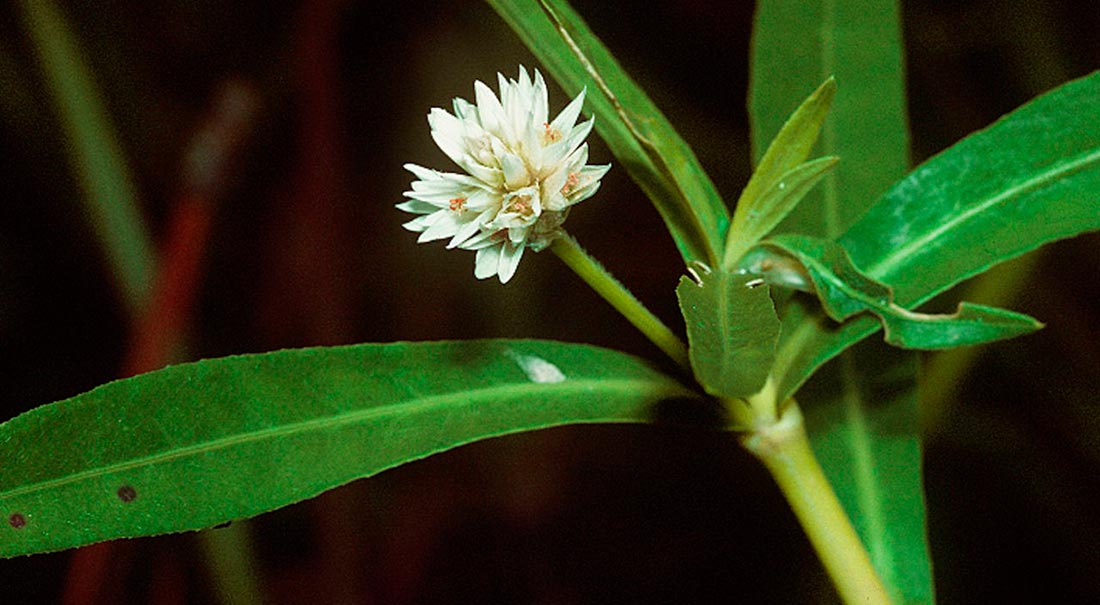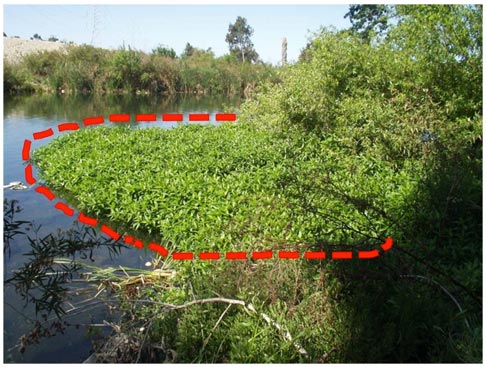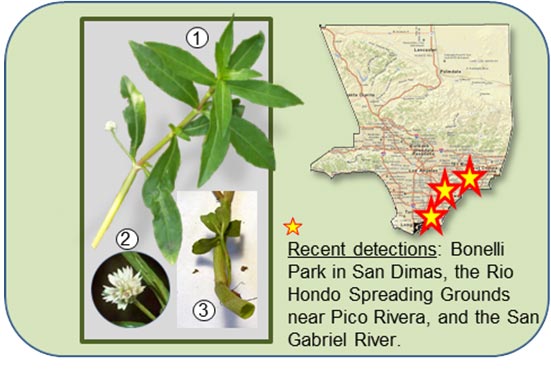Alligatorweed
Alligatorweed (Alternanthera philoxeroides) is a non-indigenous and highly invasive aquatic plant native to South America which has invaded many parts of the eastern United States. The extremely high potential for growth of this invasive plant impairs the ability of flood waters to empty rapidly during a heavy water load which significantly increases risks of flooding.
Like many other invasive aquatic plants, Alligatorweed displaces native plants in fragile watersheds, contributes to increased sedimentation, reduces oxygen levels in water, and increases mosquito habitat. Alligatorweed forms gigantic “rafts” which, in recreational bodies of water, would have a substantial negative impact on activities like boating and fishing.
Alligatorweed is not new to Los Angeles County. It was first detected in 1956 and, following a massive effort that consumed considerable resources from several County Departments, and with help from the State, Department of Food and Agriculture (CDFA) and the US Army Corps of Engineers (USACE), it was reduced to a state of near-eradication by the late 1980’s. Since then, limited surveys were conducted resulting in sporadic, small detections.
Feature photo: Robert H. Mohlenbrock @ USDA-NRCS PLANTS Database / USDA SCS. 1991. Southern wetland flora: Field office guide to plant species. South National Technical Center, Fort Worth, TX.




